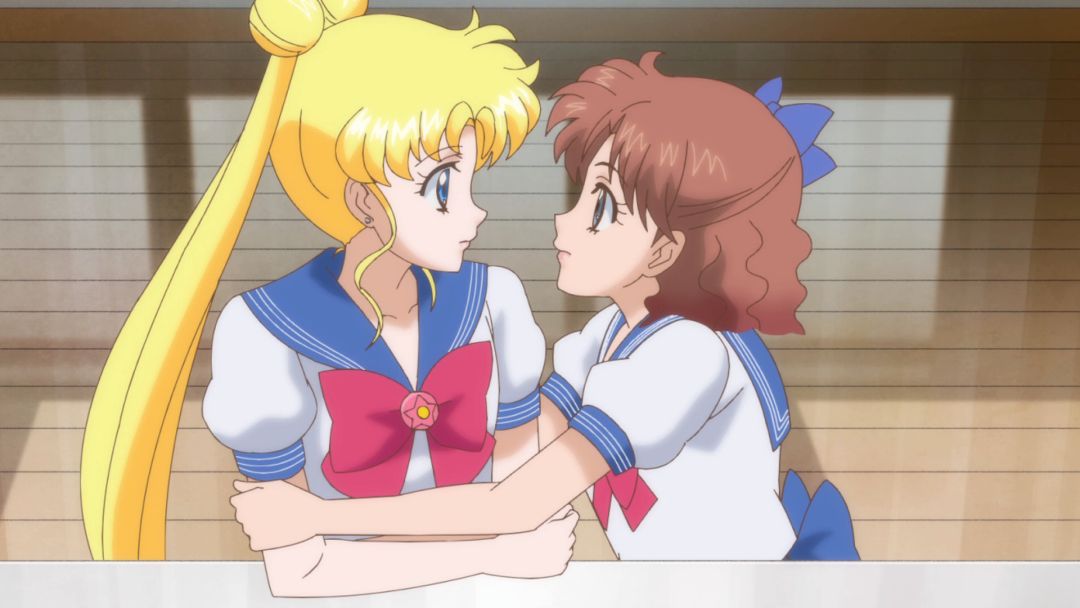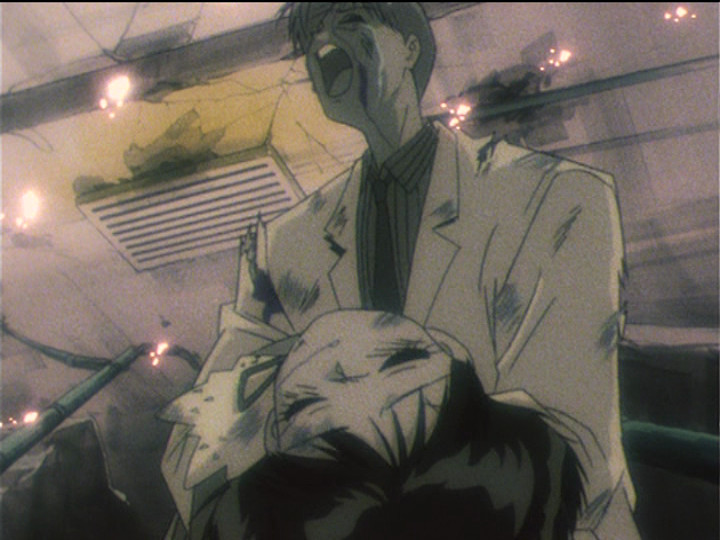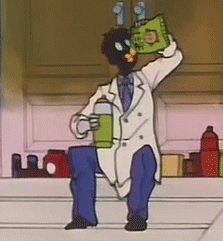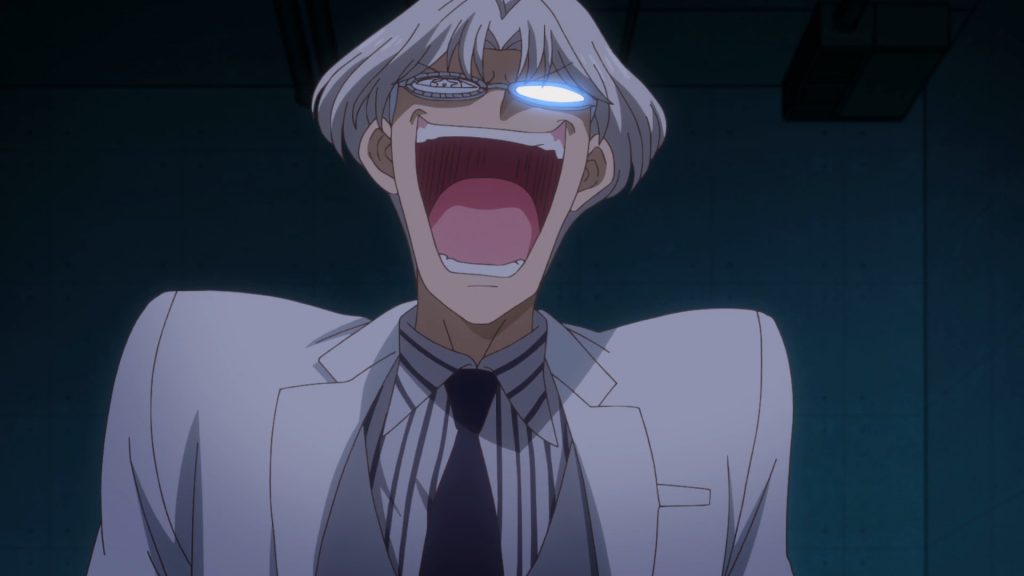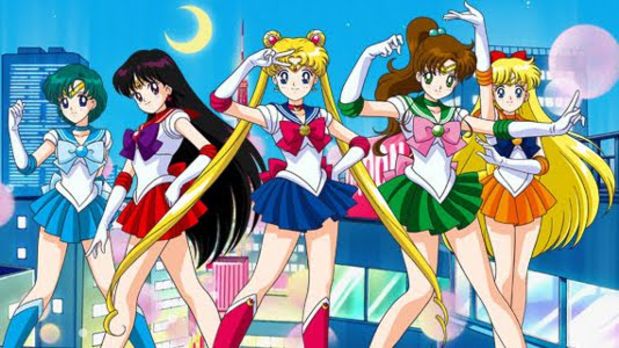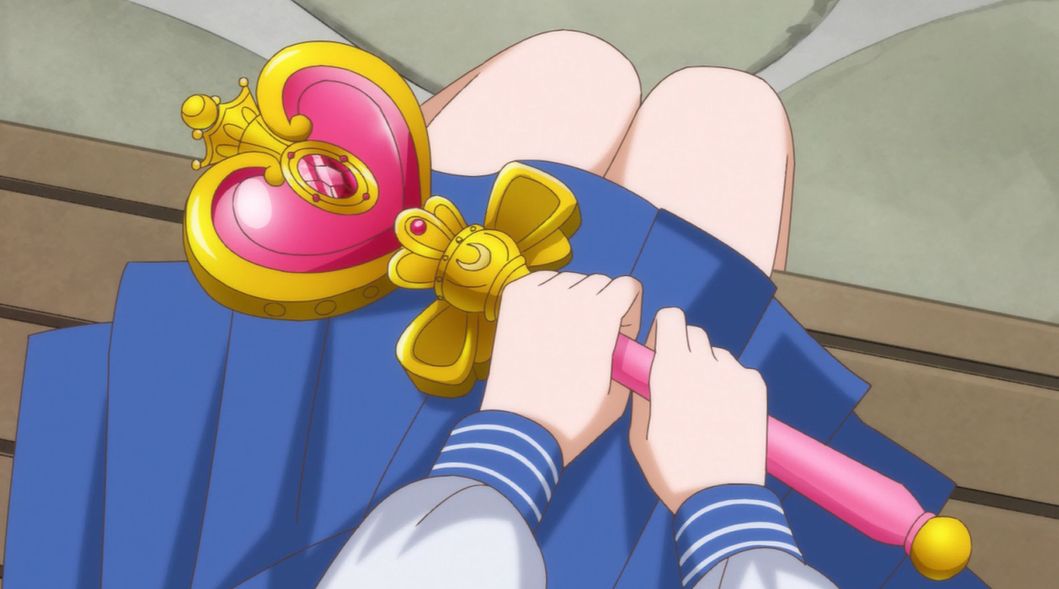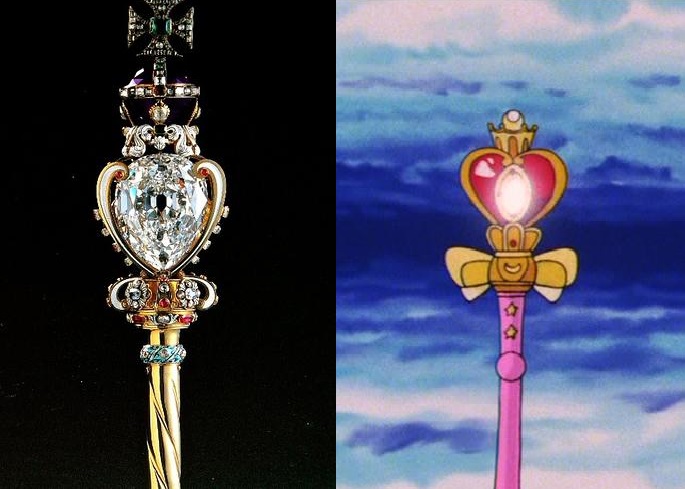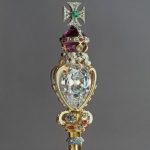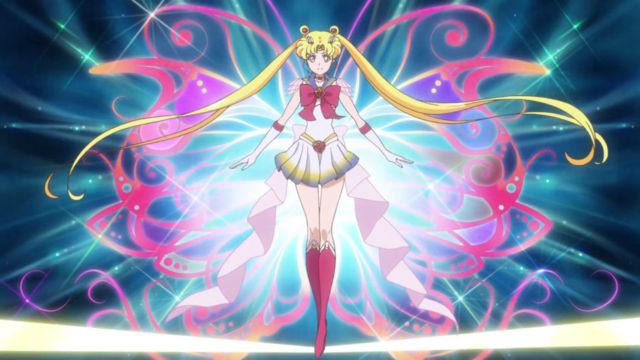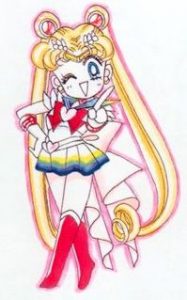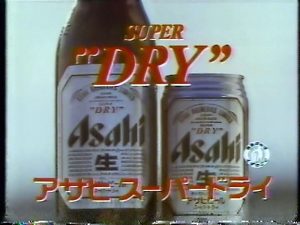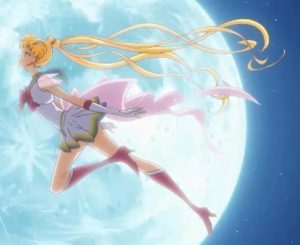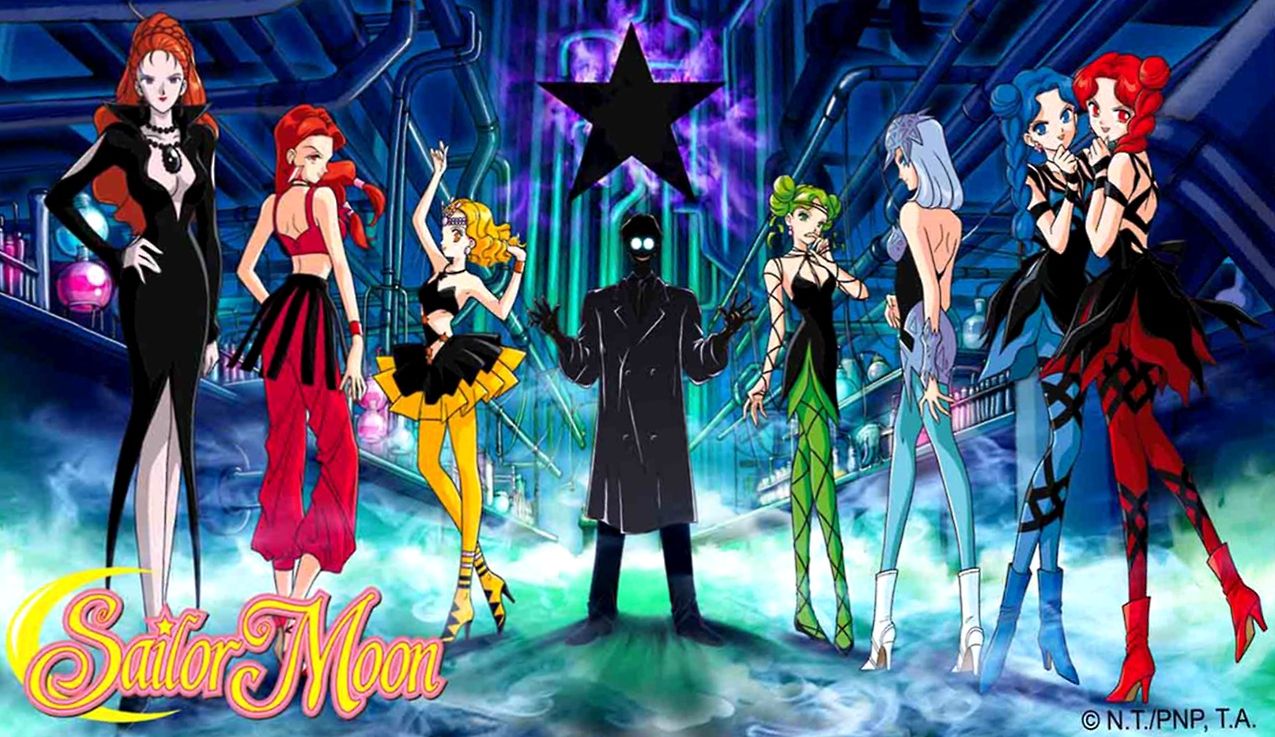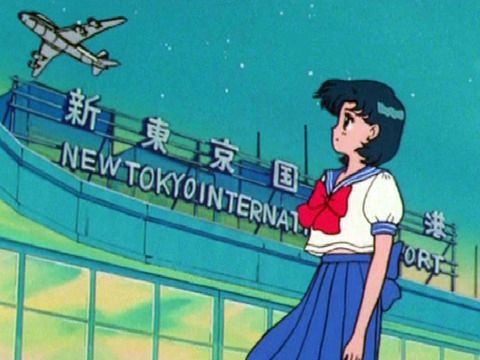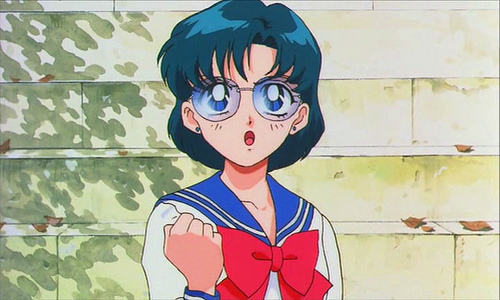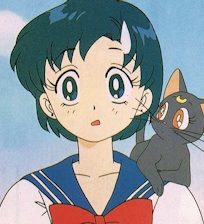Naru Osaka is one of those secondary characters that is incredibly hard to pin down. At first glance she’s just one of many background characters – like Ms. Haruna Sakurada, Usagi’s family, and many other members of the supporting case – but when you actually take time to look at the amount of work put into developing her character, you realize that quite a bit more work was put into her background than many others. So what do we actually know about Usagi’s best friend?
Tag Archives: Hidden History
Why Did Professor Tomoe Sacrifice Hotaru?
Now, far be it from me to pass judgment on what makes a good and bad parent, but I’ve always found it… questionable that Professor Souichi Tomoe chose to implant a daimon egg in his daughter (and only surviving member of his family after the tragic death of his wife), which ultimately allowed Mistress 9 to take control of Hotaru. While this plot device – or one like it – was obviously necessary for the progression of the Death Busters story arc, I wasn’t completely satisfied with that answer. After all, Ms. Takeuchi is pretty well known for putting meaning behind the most insignificant details, right? While most of what’s written in this post is just speculation on my part, I think there’s enough evidence to at least give it some serious consideration. So let’s take a closer look!
While I’m generally a fan of the Occam’s Razor1 school of thought (i.e., that the simplest explanation is the most likely to be true), when it comes to explaining the personalities and backgrounds of the characters of the Sailor Moon series, Ms. Takeuchi has proven to prefer depth and complexity. In order to answer the question about Hotaru and her father’s questionable parenting practices, we again look to Greco-Roman mythology for a little context.
Cronus, the Greek god on which Saturn was based,2 had something of a bad habit when it came to eating his own children. Seeing as he had castrated and overthrown his own father, Uranus, in order to become the ruler of the universe,3 it’s somewhat understandable that Cronus would worry about his own children wanting to topple him. In fact, he was told by Uranus and Gaia (his mother) that his own son would be his undoing. In order to put a stop to that, he would eat his children shortly after they were born.
Though canonically we would accept Hotaru as the character representative of Saturn/Cronus when it comes to her portrayal within the Sailor Moon series – indeed, Saturn was often depicted with a scythe/sickle similar to the Silence Glaive – I wonder if it’s also possible to look at the story as it’s applied to her. Though Professor Tomoe clearly cared about his daughter and sought to save her life, implanting the daimon egg within her and allowing Mistress 9 to possess Hotaru seemed to be connected with his desire to further his research (which is what caused the accident in the first place) and completely separate from his efforts to keep Hotaru alive.
While one could naturally point out the obvious difference in eating your own children and what Professor Tomoe did, the results are not so dissimilar when you take a look at the motivations behind them: like Cronus, Professor Tomoe was willing to sacrifice his own child in order to further his own goals in his quest for power.
This could all very well be just a coincidence, but seeing how much effort Ms. Takeuchi went even to match up star signs and birthdays for all of the characters, it’s definitely not out of the realm of possibilities. So what do you think? Do you think that Professor Tomoe’s treatment of Hotaru was in reference to the Greek origins of the character? Just a plot device? Maybe some other theory…? I’d love to hear it!
Why Did the Sailor Soldiers Fight in School Uniforms?
While I wouldn’t go so far as to say that it’s completely out of the question, taken from a Western point of view (and assuming no prior influences by anime or other aspects of Japanese pop culture), the very idea of a super hero transforming into a powered-up version of their own school uniform seems downright silly. It goes without saying that the entire premise behind the name of the series itself is based on the fact that they’re wearing uniforms styled after late-19th century European navies,1 but there has to be something more to the fact that these soldiers of love and justice are, sailor-suited, right? As usual, this is a rhetorical question, and the answer is most certainly yes! But let’s take a deeper look into the why.
What is the Inspiration for the Spiral Heart Moon Rod?
Throughout her time as a sailor-suited soldier of love and justice, dedicating her days to boring school work and evenings to punishing evil in the name of the moon, Sailor Moon has gone through quite a few different magical items and all manners of attacks. While I’m personally a fan of the traditional Moon Stick, which I think we can all agree has a pretty lackluster name, the inspiration behind the Spiral Heart Moon Rod is fascinating in its own right.
What makes the Spiral Heart Moon Rod so interesting is that its design, like the designs of other important items in the Sailor Moon canon, appears to be based on a real rod – a scepter1 – in the possession of the British Royal Family. Specifically, I’m referring to the Sovereign’s Scepter with Cross,2 part of the coronation regalia of the British monarchy.
In addition to the remarkable similarities in their general appearance, which is pretty convincing in its own, it’s also noteworthy that the Sovereign’s Scepter contains within it Cullinan I,3 the clearest cut diamond in the world – not too dissimilar from the legendary Silver Crystal itself! The curving lines reminiscent of a heart, the crown design on top, and the crystal embedded within all make this a pretty convincing basis for the design.
Taking into consideration that the talismans were also based on Western designs, it seems pretty fitting to me that Ms. Takeuchi would choose such a famous item from the crown jewels to use as the basis for her design. It also ties in nicely with her role as heir to the Silver Millennium and the future Neo-Queen of Crystal Tokyo.
Since we know that Ms. Takeuchi incredibly well-informed and clearly did a lot of research into various crystals, I think it would definitely be worthwhile to take a closer look at some of the broaches throughout the seasons, or maybe some of the other various sticks, wands, and scepters wielded by Sailor Moon. Just seeing something real that looks so similar really gives you a sense for just how impressive her attacks must have looked to the enemies she faces.
But what about you? What was your favorite of her weapons, and why? I’ve always loved the simplicity of the Moon Stick and how it even evolved once the Silver Crystal was added to it, but that’s just me. I’d love to hear other people’s opinions!
What’s So Super About Super Sailor Moon?
Depending on how you take it, this question could either be existential, painfully obvious, a bizarre linguistics mystery, or an interesting mix of all three. Just to be clear, we’re not actually discussing the relative power of Sailor Moon’s attacks or why the series is called Sailor Moon in the first place, but rather what was the reason for having her powered up form being called “Super Sailor Moon.” Couldn’t she just power up without needing a new name?
Well, as with a lot of things in Japanese media, answering this question requires us to take a look back at the social and historical context that the Sailor Moon series was created in. As original and unique as the series is, and as much work as Ms. Takeuchi put in to make such a rich and diverse world for her characters to live within, the series was still greatly impacted by the pop culture of the country it was founded in.
You see, throughout the mid- to late-1980s and into the 1990s, Japan had something of a love affair with the word “super,” not much unlike how “x-treme” (and various variations thereon) became synonymous with sports, soft drinks, and pretty much any product or TV show marketed to anyone under the age of 30 in the US from the late 1990s and early 2000s.1 Japan’s (…bubble) economy was going strong,2 and the word “super” seems to have been picked up by marketers to show how their product was new and improved.
The most obvious example that you’re probably all aware of is the upgrade from the Famicom/Nintendo to the Super Famicom/Super Nintendo, but this goes back much earlier. Following the Nintendo connection, the sequel/upgrade to the smash hit “Mario Bros.” was “Super Mario Bros.”3 But as we’re about to see, characters being “leveled up” so-to-speak isn’t the only way that the word super had infected Japanese culture.
In 1987 the Asahi Beer company, wanting to expand their business from a paltry 10% of the Japanese beer market, launched the Asahi Super Dry product line. This sparked off what is known as the “Dry Wars” among Japanese beer producers,4 who were all trying to capture the budding dry beer5 market.
Other noteworthy examples include the Super Saiyan form6 in Dragon Ball Z in 1991, the Super-VHS video standard7 introduced in 1987, and the proposed upgrade to the floppy disk – the so-called SuperDisk8 – in 1997. Taking a look at anime titles alone, you can see the trend pretty clearly:9
So what does this all mean, then? Essentially what this means is that during this particular time in Japan, the word “super” was a popular marketing buzz word used to convey to the audience that this was a new, upgrade, improved version of a previous product. That’s not to say that the concept didn’t exist in the west – Superman predates this marketing buzz in Japan by nearly half a century. But what’s interesting about all this is that, taken as a whole, what Ms. Takeuchi was trying to emphasizing by powering Usagi (and, later, the rest of the Sailor Soldiers) up into her Super form.
Taking into consideration how deeply this was all affected by the words, language, and other series and products out at the time, it makes me wonder what the upgraded form of Sailor Moon would’ve been called if the series came out today? Mega like in Pokémon?10 Though I’m a fan of the Super and Eternal forms, I’d love to know how things would’ve changed if the series had been made today!
Where Did the Death Busters Get Their Names?
It seems that this question comes up at least once every season, but it’s just too much for me to pass up on the opportunity to discuss the depth that Ms. Takeuchi goes to when naming her characters. And that’s saying nothing of the entirely different styles of pun-tastic names that the anime producers went with when naming their various youma, cardians, droids, daimons, and other monsters of the day. Now that the Death Busters have made their long-awaited appearance in the Sailor Moon Crystal anime, it seems like now is as good of a time as ever to discuss how it is that they characters got their names. So what was the inspiration behind the names of the Witches 5 and the other members of the Death Busters?
What is the Connection Between Ami’s Mother and Germany?
While there’s certainly nothing particularly notable in fiction about a main member of the cast (successfully or unsuccessfully) having to move away, Ami’s sudden announcement in the anime1 that she would be going to Germany of all places for her study abroad comes off as a bit random. Moreover, her reasoning – that she wants to be a doctor like her mother – seems completely unrelated. But what’s interesting about this is that while Ami’s sudden desire to go to Deutschland may seem completely random to Sailor Moon fans in the west, it actually made a lot of sense, and even seemed natural, to Japanese fans.
First, a little background on what is strange about Ami going to Germany.
In Japan, every student is required to study English for at least three years in junior high school, though most will study for six, with an additional three years in high school (though high school is not included in compulsory education in Japan).2 Though much can be said about the quality of English education in Japan,3 high scores (on tests, at least) are still seen as important by – and are even required for entering – some of the biggest companies and universities in Japan. With that in mind, why would someone as scholastically focused as Ami choose to go to Germany and not an English-speaking country?
This is where Ami’s mother and, more importantly, her career comes in. Up until around the 1990s, when digital/electronic records started to take over, it was common practice for Japanese doctors to jot down their notes and transcribe information in the patient’s chart regarding their status not in Japanese, but in German. Even the Japanese word for “patient chart,” カルテ (karute), comes from the German word karte.4
Now why would they do that? Well, the reason is two fold. First, many of the Japanese words for medical ailments and conditions involve uncommon kanji and, when the word has been borrowed, it would make more sense to write the foreign word rather than a string of katakana to spell it phonetically. Second, it was written in German to keep the patient from reading their own records.
Actively trying to keep a patient from reading their own medical records may sound like lunacy (or even malpractice!) from a 21st century, western point of view, but Japanese media is rife with scenes of a relative dying of some grave illness and only the family being told of how much longer the patient has to live. Informed consent5 wasn’t even required under any Japanese laws until the Medical Care Act6 was revised to include it in 1997. By writing the records in German, it was nearly guaranteed that the patient wouldn’t understand their own prognosis without the doctor to explain.
Though this tradition has mostly gone by the wayside now thanks to electronic records and hospitals generally informing patients of their own medical conditions, in 1993 when this episode aired, that would definitely have still been the case, and thus it would have only been natural that Ami would want to get a head start on studying German so that she could follow in her mother’s footsteps as a doctor.
Though obviously the anime wouldn’t have dared to get rid of Ami (especially considering her popularity), I still would have loved to see her away from the team for a few episodes, or even show her experiencing Germany before coming back. There is one question that’s always bothered me, though: when Ami ultimately does become a doctor, what kind of doctor would she be?
